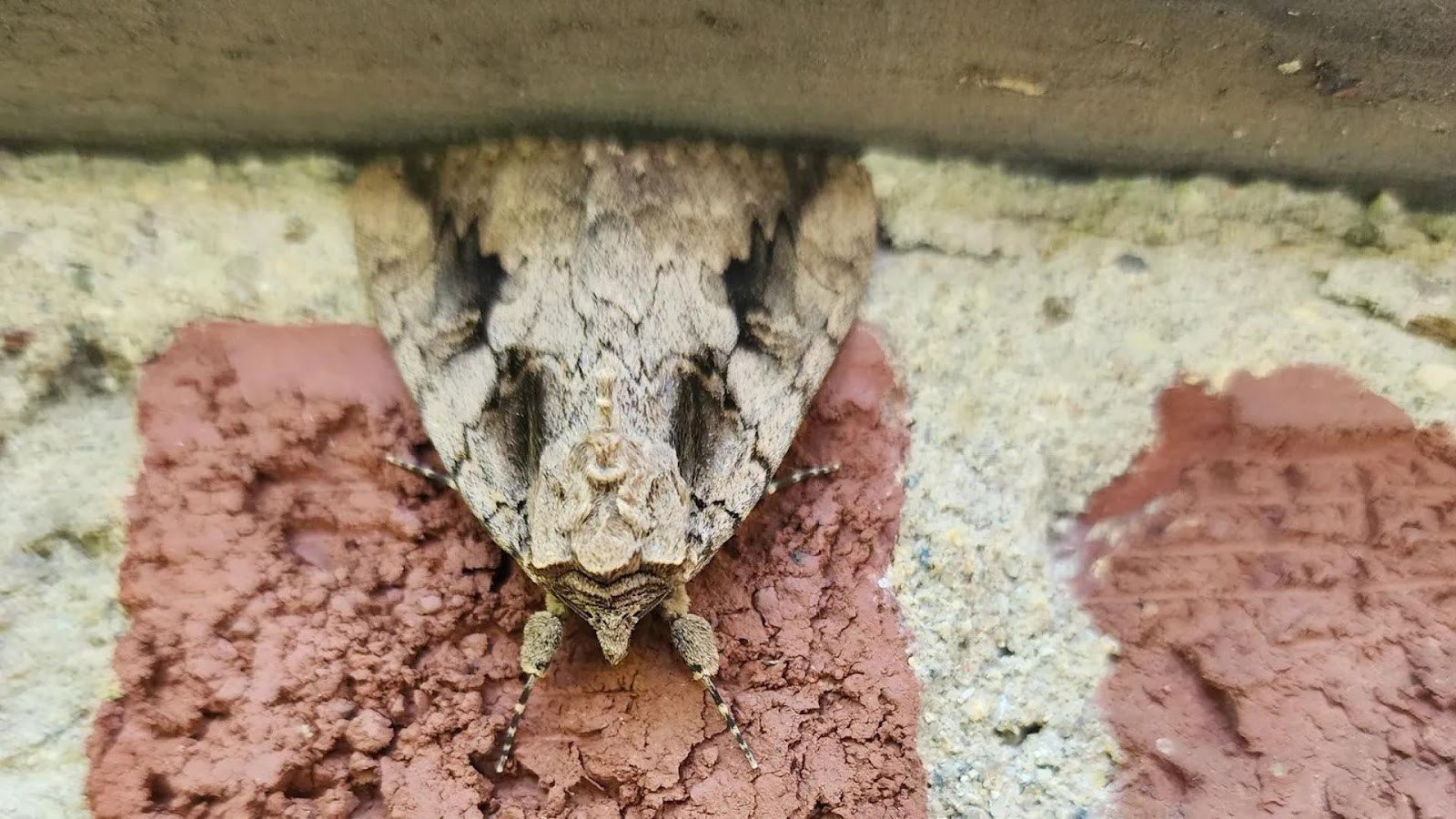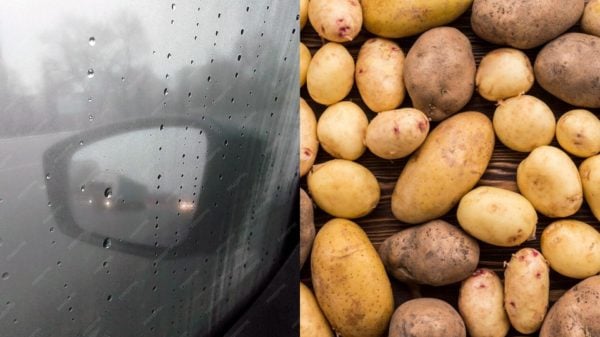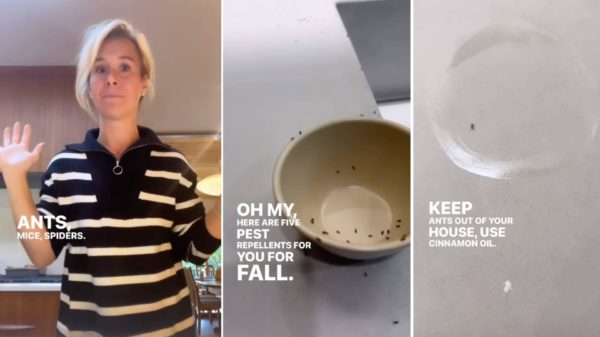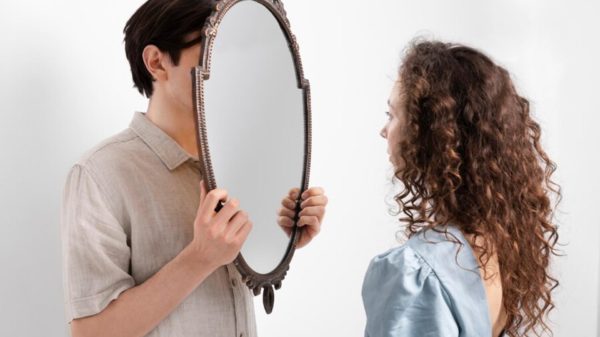In a quiet garden located in Oakland County’s Commerce Township, a unique sighting puzzled a local resident, Cathryn Daisy. While she was engrossed in her gardening tasks on a calm Sunday afternoon, she noticed what appeared to be a snake’s head emerging from the brick wall adjacent to her garden.
Cathryn explained her initial reaction, saying she was startled when she turned her head and saw what she believed to be a snake. Given the uncanny resemblance, her surprise was justified.
Deciding to document the odd phenomenon, she took clear photographs of the creature. At a cursory glance, the photographs displayed an object that bore the shape and texture reminiscent of a snake’s head, complete with what appeared to be scales.
However, upon closer and more detailed inspection, Cathryn realized that the creature was not a snake, but in fact, an insect. The “snake” was identified by local residents on a community Facebook page as a sweetheart underling moth. This particular moth species is recognized for its distinctive orange-hued colors, prominently displayed on its underwings.
However, these striking colors are usually concealed beneath its larger wings and only become visible when they are spread. It’s worth noting that the sweetheart underling moth is widespread across the majority of the United States, with the exception of the West Coast. The species also stretches into some regions of southern Canada. An adult sweetheart underling moth can have an impressive wingspan, ranging between 3 to 4 inches.
Interested in gaining more insight into this phenomenon, the Detroit Free Press took the initiative to consult an expert in the field. With Cathryn’s consent, her photographs were shared with Howard Russell, an established entomologist affiliated with Michigan State University.
After examining the photos, Russell remarked on the optical illusion created by the moth against the brick wall. He confirmed, “Against the brick background, it definitely looks like a snake’s head.”
Mimicry is a common phenomenon observed in the animal kingdom. Many species have evolved to resemble other animals or even inanimate objects for various survival reasons. Some adopt these disguises to attract prey, while others use mimicry to deter potential predators or simply to camouflage themselves in their environment.
Russell provided an illustrative example of this: the larvae of the giant swallowtail butterfly. This species has evolved to mimic the appearance of bird droppings, a tactic that effectively deters predators from seeing them as potential food.
However, when it comes to the sweetheart underling moth, Russell pointed out that its resemblance to a snake’s head, especially when juxtaposed against the brick wall, was more coincidental than a result of evolutionary mimicry. He further elaborated, “I think the moth’s coloration is meant to mimic tree bark where the moths typically hang out.”
This incident serves as a testament to the wonders of nature and the intricate ways in which different species evolve and adapt to their surroundings.
































